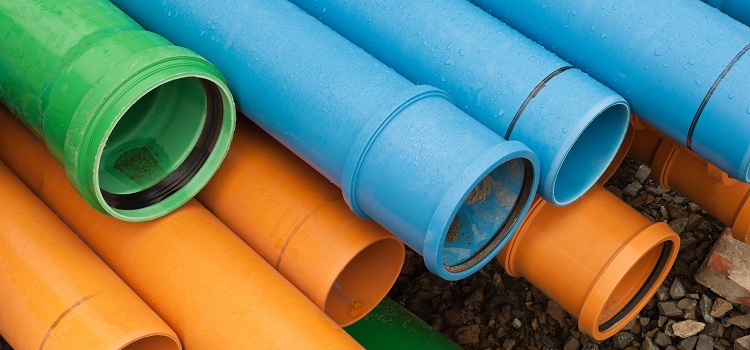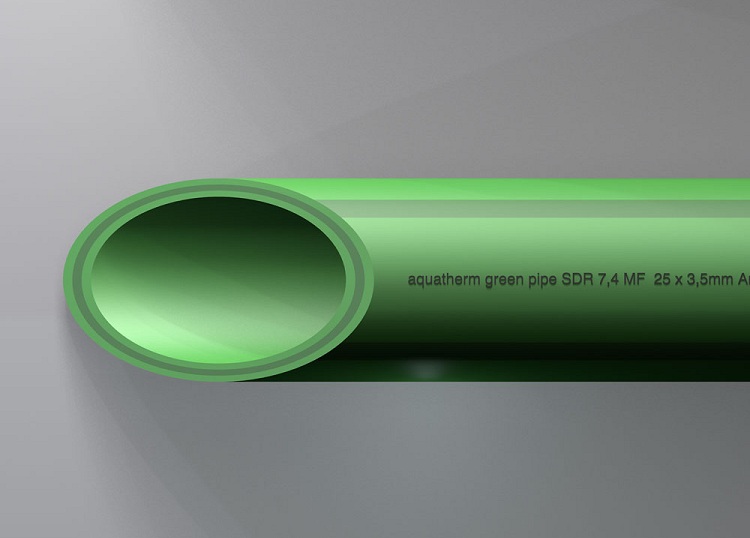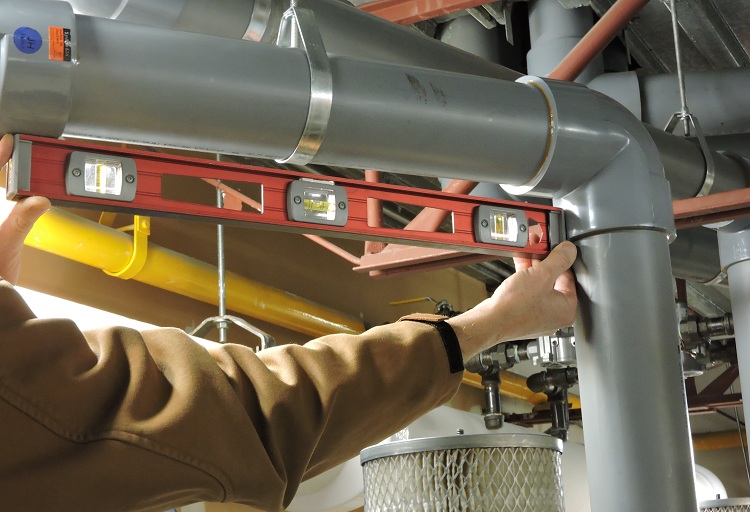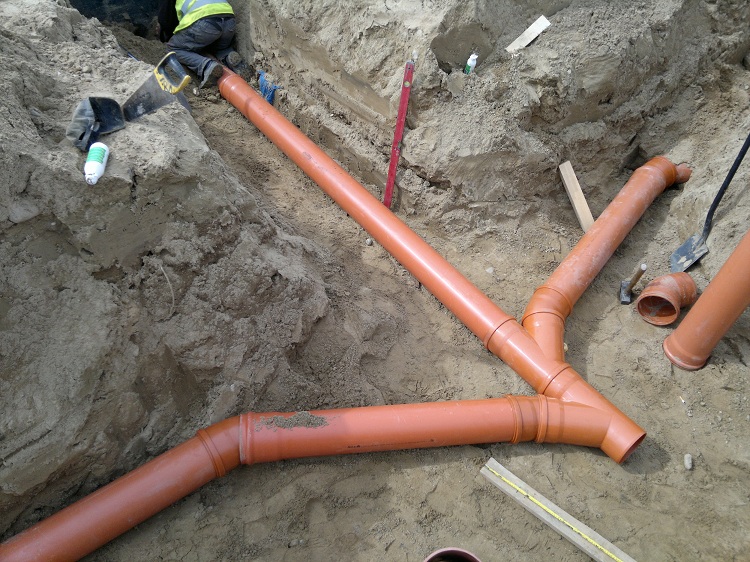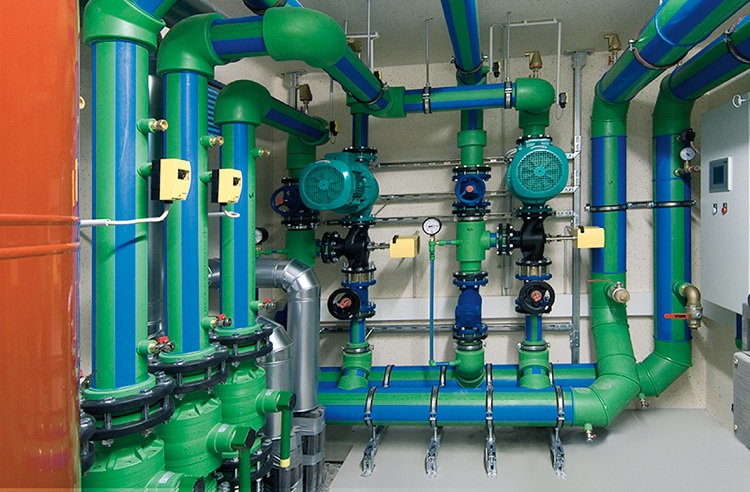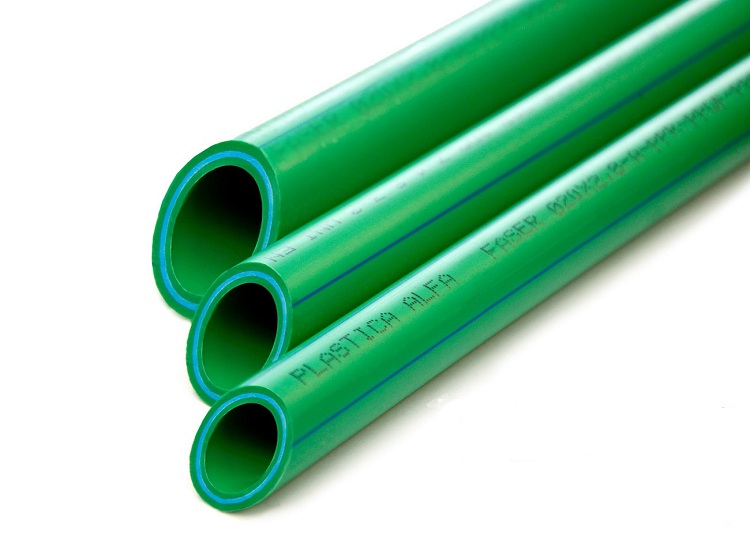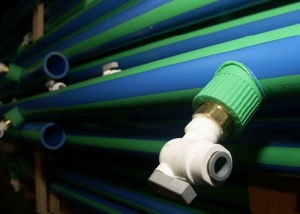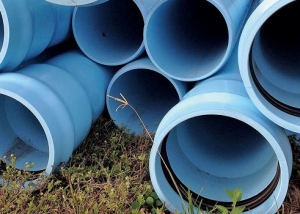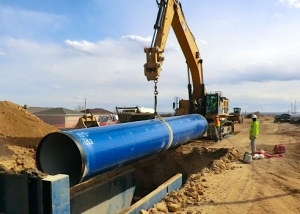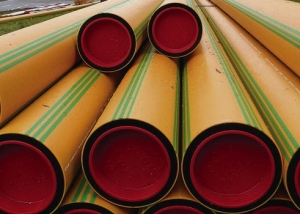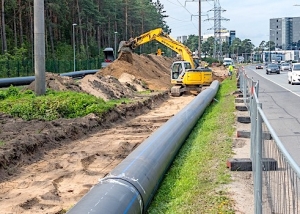The diameter of polypropylene pipes is one of the key characteristics of these products. Based on the parameter of the diameter of the polypropylene pipe and the associated wall thickness, the required number of products is selected for use in a particular area. The required number and size of fittings for connecting various structural elements are also due to the values of the considered parameter.
Content
- 1 Classification of polypropylene pipes based on the composition of raw materials
- 2 Graduation of polypropylene pipes, based on the pressure of the working medium
- 3 Diameters of polypropylene pipes for ventilation
- 4 The choice of the outer diameter of polypropylene pipes for sewage
- 5 Diameter of polypropylene pipes for water supply and heating
- 6 Polypropylene pipes: we calculate the diameters for autonomous heating
- 7 Some features of the installation of PP pipes depending on the diameter
Classification of polypropylene pipes based on the composition of raw materials
Choosing polymer parts for any work, take into account their features arising from the use of materials for the manufacture, purpose and a number of other parameters.
Polypropylene products are usually distinguished by several main indicators. In particular, based on the composition of the raw materials used for the manufacture. Taking into account the depth of modification of the main polymer with various kinds of additives that affect the properties of the final product, adhere to the following markings:
PPR (PPRС). The most requested in the field of domestic use, as well as in the arrangement of plumbing, sewer and heating systems. The main raw material for the manufacture is a random copolymer or a static polymer of polypropylene with a crystalline molecular structure. The resulting material demonstrates stability against shock loads and temperature fluctuations in the widest range: from -170º C to + 1400º C. The diameter of polypropylene PPR pipes is from 16 to 110 mm.
Important! When selecting, the calculated value of the nominal pressure should also be taken into account.
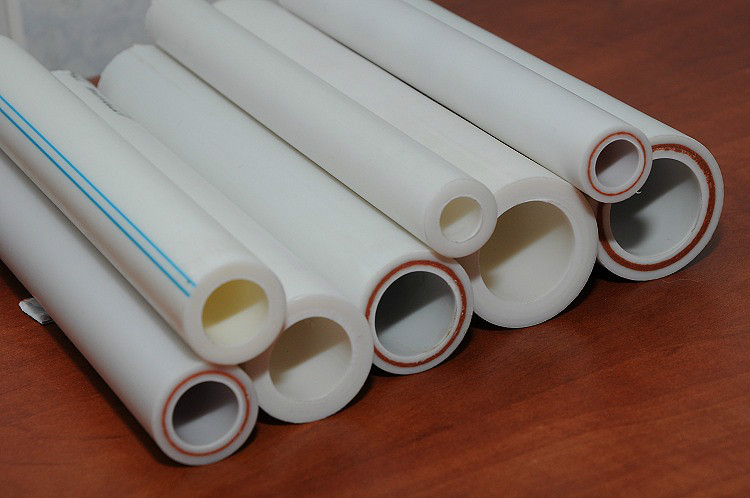
The composition of the raw materials for the manufacture of polypropylene pipes is different, so the properties and characteristics of the products differ
PPH. Demanded in the arrangement of ventilation systems, sanitation, cold water supply. Modifying additives (nucleators, antistatic agents, flame retardants) give the material a special resistance to mechanical stress. Due to the low melting point, they are not used in the arrangement of heating systems. Polypropylene pipes of large diameters are selected for the arrangement of the sewage system of industrial facilities and the drainage system.
PPB Used for laying cold water and laying underfloor heating. The special structure of the material formed by repeating homopolymer blocks in a specific pattern, excellent composition and structure, products are required increased shock resistance;
PPs. Polyphenyl sulfide products have a place in the arrangement of water supply systems, both cold and hot, heating, ventilation. What contribute to the parameters characterizing the strength and wear resistance, increased resistance to overheating and loads. The outer diameter of the PPs ranges from 20 to 1200 mm.
As you can see, additives in polypropylene play an important role, significantly changing the properties of the base substance.
Graduation of polypropylene pipes, based on the pressure of the working medium
The resistance of polypropylene to the pressure of the working medium is indicated as follows:
- N (PN) 10. The inner diameter of PN10 polypropylene pipes is in the range from 16 to 90 mm, the outer diameter is from 20 mm to 110 mm. With a wall thickness of 1.9 to 10 mm and an estimated pressure of 1 MPa, they are used in the supply of cold (up to 20º C) water, a system of warm floors (up to 45º C);
- PN16. Infrequently come across products are suitable to supply water with a temperature up to 60º С;
- N (PN) 20. The most popular pipe with an internal cross section of 10, 6 and an outer one - from 16 to 110 mm is suitable for a water supply system with a liquid temperature of up to 80º C. Walls of 16-18.4 mm can withstand a pressure of 2 MPa;
- N (PN) 25. The largest internal cross section is 50 mm, the smallest is 13.2 mm, the values of the outer diameter range from 77.9 mm to 21.2 mm. The multi-layered structure of PN25, with additional reinforcement from aluminum foil, is particularly resistant to both shock loads and thermal surges. The temperature of the coolant can rise to 95º C.
The mechanical strength of polypropylene pipes is increased by reinforcing using:
- aluminum foil as the outer layer or gasket between the layers of the base material;
- fiberglass, the fibers of which, mixed with polypropylene, make up the middle layer of a three-layer structure.
Note! Reinforcement of products allows to prevent delamination during operation and lengthens the terms of their productive use.
The ratios of the three parameters of the most popular types of polypropylene pipes are presented in the table.
Table 1
| Outer diameter mm | Inner diameter mm | Wall thickness mm | ||||
| PN10 | PN20 | PN25 | PN10 | PN20 | PN25 | |
| 110 | 90 | 73,2 | 10 | 18,4 | ||
| 90 | 73,6 | 60 | 8,2 | 15 | ||
| 75 | 61,2 | 50 | 50 | 6,9 | 12,5 | 6,9 |
| 63 | 51,4 | 40 | 40 | 5,8 | 10,5 | 5,8 |
| 50 | 40,8 | 33,2 | 33,2 | 4,6 | 8,4 | 4,6 |
| 40 | 32,6 | 26,6 | 26,6 | 3,7 | 6,7 | 3,7 |
| 32 | 26 | 21,2 | 21,2 | 3 | 5,4 | 3 |
| 25 | 20,4 | 16,6 | 16,6 | 2,3 | 4,2 | 4,2 |
| 20 | 16,2 | 13,2 | 13,2 | 1,9 | 3,4 | 3,4 |
| 16 | 10,6 | 2,7 | ||||
Diameters of polypropylene pipes for ventilation
When installing a ventilation system, the choice of polypropylene pipes is more than justified. The main advantage becomes, with sufficient strength, not particularly in demand in this case, the insignificant weight of structural elements. In addition, they can be connected with standard four-, five-, and six-meter segments. Longer lengths are used occasionally due to inconvenience of transportation.
Laying has to be carried out in different conditions, often not having the ability to attach the elements of the ventilation system to the capital supports. The low weight of polypropylene structures allows you to use decorative elements as a support or lay them in a space above suspended ceilings. In cross section, polypropylene pipes for ventilation systems are very diverse, it can be square or rectangular, oval or some intricate shape.
For residential premises with equipment of the ventilation system, as a general rule, products with a diameter of about 100-125 mm are selected. The connection of individual sections is carried out by the socket, the need for welding is not observed. Large diameter polypropylene pipes are required for large-scale ventilation systems, for example, at industrial facilities.
The choice of the outer diameter of polypropylene pipes for sewage
When arranging a sewer system, the main requirement is to ensure tightness. Therefore, when connecting polypropylene structures to the socket, rubber o-rings are used.
Equipping gravity sewers, laid taking into account a slope of one or two centimeters per linear meter, preference is given to corrugated pipes. Products of this kind at small diameters are produced and stored in bays.The advantage of using polypropylene corrugation when laying gravity drainage manifests itself in soil subsidence, to which it is sensitive much less than a smooth-walled product.
The internal sewerage is laid using, as usual, polypropylene pipes up to two meters long (minimum shorts are thirty centimeters long) and with a diameter of 40, 50 and 110 mm.
For the arrangement of external sewage, other standard sizes are used. Inter-house sewers are laid, resorting to the use of heavy equipment, since it is necessary to operate with segments of a length of about ten meters, the diameter of which can reach 600 mm.
Note! When laying the external network, they try to select standard pipe segments.
Diameter of polypropylene pipes for water supply and heating
The internal section of polypropylene water pipes varies between 16-110 mm. The values of the outer diameter and wall thickness are important from the point of view that they specify the strength of the product, its ability to withstand the pressure of the working fluid flow. The selection of the product of the required internal diameter is based on the formula:
D = √4Q * (1000 \ πv)
In the above formula: D is the diameter of the inner section; water consumption at peak load; v is the water flow rate.
For the water flow rate, values of 0.7-1.2 m / s are substituted - for products with a small internal section and 1.5-2 m / s - large. More accurate calculations are carried out using tables and special programs. As a rule, pipes with a diameter of 25 (for five-story buildings) and 32 mm (for nine- and sixteen-story buildings) are selected for water supply and central heating of multi-story buildings. When installing in your own apartment, they are guided by the internal section of the branch pipe extending into the apartment from the central riser. In private homes can be used and products of smaller diameter - 16, 20 mm.
Larger internal polypropylene pipes are used to deliver cold water to buildings. They are not used on heating mains.
Polypropylene pipes: we calculate the diameters for autonomous heating
Selecting the necessary elements for arranging heating, they operate with three concepts of diameters:
- Internal, determining the size of the product.
- External, laid the basis for determining the diameter as: small - 5-102 mm; medium - 102-406 mm; large - over 404 mm.
- Conditional, expressed in inches and rounded
Choosing polypropylene pipes for the heating circuit of a private household, take into account:
- heated area. With ceilings of standard height and the absence of insulation per square meter, it is customary to allocate 0.12 kW of thermal power;
- coolant circulation speed, usually taken as 0.6 m / s;
- difference in supply and return temperatures. It is set by standards at 20º С. In some cases, it is desirable to take into account the power of the heating boiler, and the insulation of the pipes, and their material, and the speed of the coolant;
- the presence of windows, under each of which you will need to install a heating radiator.
The use of pipes of smaller diameter:
- more profitable economically;
- simplifies installation;
- slows down the circulation of the coolant;
- reduces the time spent on heating the coolant, reducing energy costs.
Note! Excessive reduction will result in inefficiency of the heating system and increased noise level. Therefore, it is worth using special calculation tables and online calculators. As a rule, a diameter of 25 mm or less is sufficient.
Some features of the installation of PP pipes depending on the diameter
When laying networks, recessed later in plaster or screed, select fiberglass reinforced pp pipes. This provides increased tensile strength and insignificance with strong heating. This practice is accepted, especially in regions with a cold climate.
When laying pipes with a diameter of 32 mm or more in places where there is a high risk of deformation under external influence, for example, in a section with busy traffic, the use of reinforced concrete boxes is recommended. Laying pipelines with a diameter of 200 mm and above is carried out without the use of fittings. The joints are welded, and the wall thickness serves as a guarantee of the strength of the joints.
The installation of pipes with diameters from 300 mm and a wall thickness of up to 20 mm is usually carried out using special equipment. Since products of ten meters length, from which cold water supply systems are mounted, differ, in addition to dimensions, in significant weight.
As you can see, the choice of a polypropylene pipe of the desired diameter is important in the arrangement of engineering networks, guaranteeing the convenience and durability of subsequent operation.
